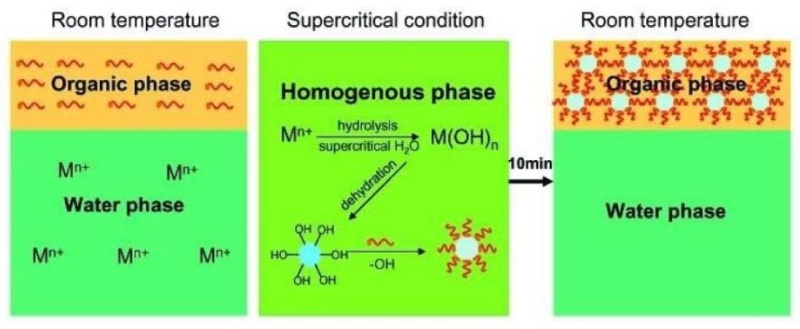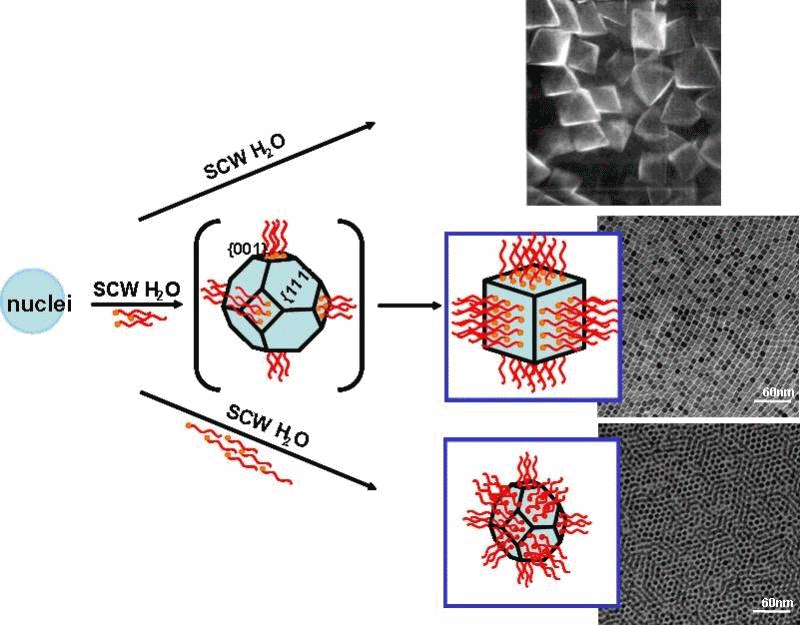 Supercritical Hydrothermal Synthesis of Organic-Inorganic Hybrid Nanoparticles
Supercritical Hydrothermal Synthesis of Organic-Inorganic Hybrid Nanoparticles
update:2020/06/16
- Features and Uniqueness
-
- We invented supercritical hydrothermal synthesis method for the synthesis of organic modified nanoparticles (NPs). Under the supercritical state, the organic molecules and metal salt aqueous solutions are miscible and water molecule works as an acid/base catalyst for the reactions. Organic-inorganic conjugate NPs can be synthesized under this condition. This hybrid NPs show high affinity with the organic solvent or the polymer matrix, which leads to fabricate the organic inorganic hybrid nanomaterials with the trade-off function (super hybird nanomaterials). These hybrid materials of polymer and ceramics fabricated with NPs achieve both high thermal conductivity and easy thin film flexible fabrication, namely trade-off function.
- Practical Application
-
For example, by the surface modification of BN particles by supercritical method, affinity of BN and polymers could be improved, so that high BN content of hybrid materials, thus high thermal conductivity materials, could be synthesized. Also by dispersing high refractive index NPs like TiO2 or ZrO2 into polymers transparently, we can tune the refractive index of the polymers. CeO2 nanoparticles are expected to be used for high performance catalysts. To transfer those supercritical fluid nano technologies, a consortium was launched with more than 70 companies.
- Keywords
Researchers
Advanced Institute for Materials Research
Tadafumi Ajiri, Professor
Doctor of Engineering


 Medical
Medical
 Life Sciences
Life Sciences
 Information Communication
Information Communication
 Nanotechnology / Materials
Nanotechnology / Materials
 Energy
Energy
 Manufacturing Technology
Manufacturing Technology
 Social Infrastructure
Social Infrastructure
 Frontier
Frontier
 Liberal Arts
Liberal Arts




